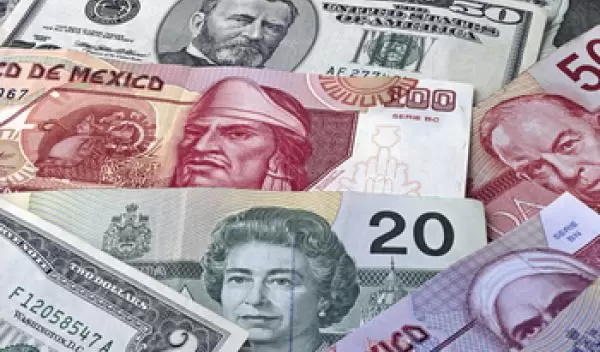
Foreseeing US economic trends
Although economist Tim Kehoe's computer models are complex--analyzing numerous datasets related to the buying and selling of goods and services, trade and investment, saving and lending--the underlying premise of his research is simple.
He studies how people make economic decisions over time. Producers, for example, must look ahead and try to forecast prices, taking into account how consumer demand is going to change. At the same time, consumers making future buying choices must think about what might happen to their income during the same period.
Kehoe is developing computer models to try to accurately predict the likely outcomes.
"There is uncertainty about productivity and government policies, so many people uncertain about what's going to happen in the future make their plans contingent," says Kehoe, a professor of economics at the University of Minnesota and an adviser to the Federal Reserve Bank of Minneapolis. "If I am a firm and I want to sell my product in a foreign market, and I'm worried about what's going to happen to prices in that foreign market, I'll want to know how the price for those goods will translate into income in my home country."
Kehoe's research and teaching focus on the theory and application of general equilibrium models, which, in economics, attempt to explain the behavior of supply, demand and prices with several or many interacting markets with the assumptions that a set of prices exists that will generate an equilibrium.
These insights could prove especially valuable to policymakers and business leaders looking to foresee future U.S. economic trends.
Kehoe's work involves, among other things, creating models that predict the effects of trade liberalization on the allocation of resources across various sectors of the economy; in particular, how this leads to a boom in foreign investment that could leave a country and its financial system vulnerable to a financial crisis.
He also develops models that analyze the impact of trade policies on the structure of industries, for example, the effects of the North American Free Trade Agreement, or NAFTA.
Among other things, Kehoe consulted with the Spanish government in 1986 on the wisdom of joining the European Community; the Mexican government in 1994 on the impact of joining NAFTA; and the government of Panama in 1998 on the effects of unilateral foreign trade and investment reforms.
He has been the recipient of nine National Science Foundation (NSF) grants starting in 1982--totaling about $1.5 million. More recently, he received a prestigious fellowship from the John Simon Guggenheim Memorial Foundation, which annually supports a diverse group of scholars, artists and scientists chosen on the basis of prior achievement and exceptional promise.
Since the early 1990s, the U.S. has borrowed heavily from its trading partners, and "we wanted to look at what would happen if the foreigners save less and, therefore, lend less to the United States," he says. "Will it happen in an orderly way, or end in a crisis?"
He and his collaborators modeled U.S. borrowing resulting from a global savings glut--where foreigners sell goods and services to the U.S., but prefer purchasing U.S. assets to purchasing U.S. goods and services--using four key datasets of the U.S. and its position in the world economy during a 20-year period beginning in 1992.
In the model, as in the data, the U.S. trade deficit first increases, then decreases; the U.S. real exchange rate first appreciates, then depreciates; a deficit in goods trade fuels the U.S. trade deficit, with a steady U.S. surplus in the service trade; and the fraction of U.S labor dedicated to producing goods--agriculture, mining and manufacturing--falls throughout the period.
Using their models, he and his colleagues analyzed two possible ends to the saving glut: an orderly, gradual rebalancing and a disorderly, sudden stop in foreign lending as occurred in Mexico in 1995–96.
"We found that a sudden stop would be very disruptive for the U.S. economy in the short term, particularly for the construction industry," he says. "In the long term, however, a sudden stop would have a surprisingly small impact."
"As the U.S. trade deficit becomes a surplus, gradually or suddenly, employment in goods production will not return to its level in the early 1990s because much of this surplus will be exports of services and because much of the decline in employment in goods production has been, and will be, due to faster productivity growth in goods than in services," he adds. "We will probably produce more services, such as managerial or design services," to make up for the trade deficit decline.
"The United States is the biggest service exporter in the world, and, as services become more and more expensive, the U.S. can sell services at a higher price and buy goods from other countries more cheaply," he says.
Models are not perfect, and have been wrong in the past. His ongoing goal is to change that.
"When economists built models of the impact of trade and investment liberalization in North America 20 years ago, some of our predictions were right, but some predictions were wrong," he says. "We want to understand why, and what we still need to learn about building models, and especially think about what we got wrong and what we need to do in the future."


